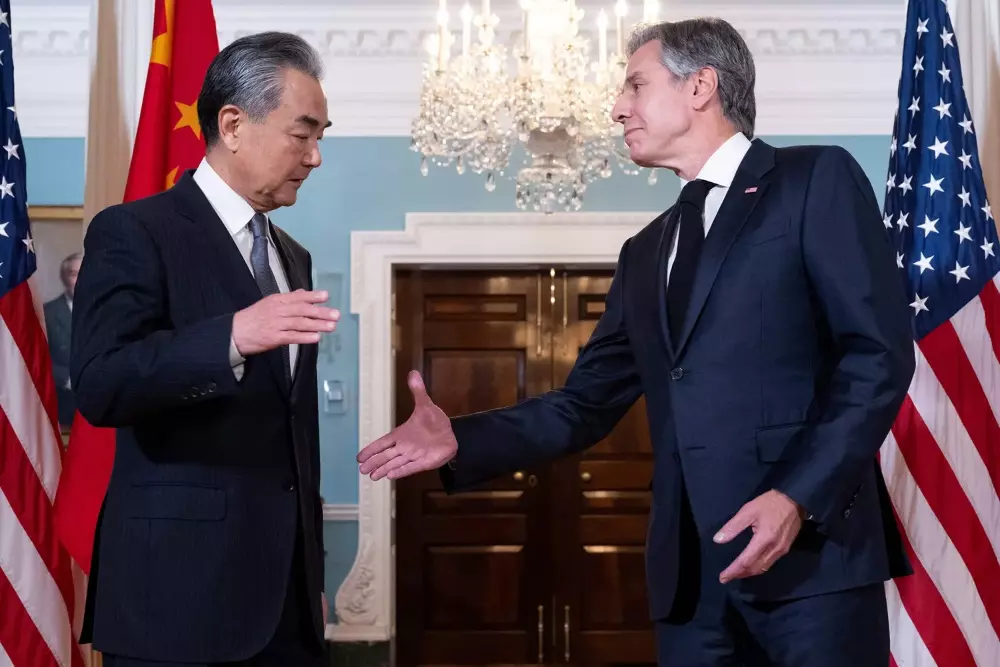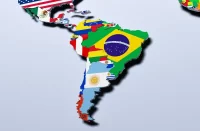In the past thirty years since the Cold War ended, significant changes in the world’s geopolitics and economy have caused dramatic shifts in the power balance of top nations: the United States, Russia, and China. New powerful nations have risen on the global platform, particularly the BRICS states. The world is moving towards a multipolar setting from a unipolar one. Currently, the military, political, financial and economic potentials of the US, as a primary world leader, have been observed to decline, hindering solving pressing political and military issues. The Biden administration’s foreign policy exhibits greater volatility, unpreparedness, and recklessness, perhaps due to a sense of insecurity.
The most recent unsuccessful military endeavors by America in Syria and Afghanistan, in addition to the loss of US influence in African and Middle Eastern nations, along with the ineffective resolution of Palestinian issue, depict the present state of things. The White House’s failure to fully comprehend the crisis situation involving Israel, and subsequently, its incapability of anticipating Hamas’ activities, has been extremely revealing, denigrating Washington’s standing amongst Global South countries, significantly encouraging the desire of many emerging nations to become a part of BRICS.
The military conflict started by Kyiv with Washington’s guidance and the introduction of new measures aimed at isolating and weakening Russia. However, these actions not only failed to achieve its goals, but also helped unify Russian society in support of the ongoing SMO and aided in the national economy’s swift adjustment.
The US government began to realize the illusory nature of hopes for significant progress against Moscow at this time. They are now gradually transferring most of their political and financial aid to Ukraine onto the NATO partners and allies. The main objective for Washington is to constrain its primary competitor, China. In October this year, a report by an inter-partisan commission of the US Congress emphasized that the US strategy should aim to prevent and overcome Russian and Chinese aggression in Europe and Indo-Pacific using conventional weapons. The European allies aren’t keen to restrict their trade and economic ties with the Middle Kingdom, which is why they haven’t given their firm backing to the Alliance’s proposal for more “Asian projection” announced at the last NATO summit. Additionally, expanding the Alliance’s area of responsibility to Asia goes against the bloc’s charter and the principle of Atlanticism, making it a contradictory idea. This reminded Europeans of the German Reich’s claims to world supremacy through the creation of a military bloc of the Axis countries, including fascist Germany, Italy and militaristic Japan, in 1930s. Consequently, France objected to the proposition of establishing a NATO office in Japan, arguing that emphasis should be given to the issues of North Atlantic.
Since 2022, official US foreign policy papers have identified China as the biggest threat to US national security, joining Russia, Iran, DPRK, and terrorist groups on the list. The increasing authority of China, its growing economic and military impact around the world, its reluctance to restrict nuclear arms (the Pentagon states China aims to put into action at least 1,500 nuclear warheads by 2035) and other aggressive weaponry, along with Beijing’s enhancement of military partnership with island countries in the Indo-Pacific are viewed by Washington as a direct danger to American strategic interests, an effort to reduce American standing and impact in the area. For the US, as a dominant power seeking to maintain its position, the primary objective of having a presence in the Indo-Pacific is to stop the rise of rival countries in the area that could harm US’ international priorities, discourage future competitors, and manage its allies and partners.

In 2023, the White House announced a new Indo-Pacific Strategy which highlights the crucial role of IPR in America’s future and its reliance on the region’s safety and prosperity. The elevated priority of IPR in the updated US’ approach is because Beijing is utilizing its economic, diplomatic, military, and technological capabilities to create its own zone of influence in the IPR and assert its position as the most prominent power.
“We can’t rely on Beijing to change its trajectory. So we will shape the strategic environment around Beijing to advance our vision for an open and inclusive international system,” the strategy says.
The Americans aim to work with India, Australia, Japan, South Korea and the Philippines to counter and restrain Beijing by increasing the negative views of China’s expanding military and economic might in the region. Currently, the US Indo-Pacific strategy to combat Chinese influence concentrates on creating and extending partnerships like AUKUS, QUAD, and Partners in the Blue Pacific (PBP). It also aims to reinforce bilateral security ties with regional countries and promote security norms in the area. Aside from bilateral connections, Washington is building trilateral relationships with its allies in the region, including US-South Korea-Japan and US-Japan-Australia.
However, many IPR nations, particularly India and ASEAN members, are wary or do not entirely align with the US. They fear Washington lacks the capability to effectively face China’s challenges and may not provide security guarantees or allied assistance. Additionally, numerous states in the area express interest in collaborating on trade and economic affairs with the globe’s second-largest economy while attempting to attract Chinese investments. Simultaneously, there is increasing focus on the balance of power between major powers in the IPR.
As a consequence, the White House must mostly depend on the United Kingdom, Australia, and New Zealand, due to their proximity in the Anglo-Saxon ethos, as well as the Philippines, and to a smaller degree, Japan and South Korea occupied by the US, to promote their strategy of restricting China’s military.
The initial four members of the “anti-China coalition” are mainly worried about China’s military expansion. In the view of the “four”, China’s preparation for ‘stormy seas’, as warned by Xi Jinping, is indicated by the consolidation of the first island chain in the South China Sea, an increase in PLA conscription, reduced external reliance and a rising hostility toward Taiwan. The Quartet cooperate mainly through continuous military training, carrying out joint projects, especially in the cyber field, and collaborating on electronic intelligence as part of the Five Eyes program.
At the same time, the results of Australian Prime Minister Anthony Albanese’s visit to the US in October demonstrated that Canberra is increasingly becoming the most dependable defense ally of Washington as it enters the “critical decade” of competition with China. The US Congress has pledged to prioritize the transfer of technology and loan financing for constructing five AUKUS nuclear submarines in Adelaide. Additionally, three US Virginia-class nuclear-powered submarines with 40 Tomahawk cruise missiles on each side in non-nuclear versions will be transferred to the Australian Navy. The Australian Government predicts that purchasing submarines could cost at least A$368 billion for the next 30 years. Despite this, Canberra is dedicated to upholding power balance in the IPR and thinks that attaining this costly ability is essential to protect its strategic concerns. From 2027 onwards, up to four American Virginia-class attack submarines and one British Astute-class attack submarine will regularly deploy to Stirling Naval Base located in Western Australia.
Washington intends to send six B52 strategic bombers to Northern Australia, while also increasing the number of US’ SSBN visits to Australian naval bases. Agreement has been reached to produce Guided Multiple Launch Rocket Systems (GMLRS) in collaboration with the Australians by 2025, alongside the transfer of technical documents for production of 155 mm M795 artillery shells.
Australia is important to Washington as an ally and a significant location for deployment of US’ forces in the southern part of IPR. More importantly, Australia is outside China’s missile umbrella, which puts US bases in Japan, South Korea, the Philippines, and Guam at risk.
The world’s top nations, including the US, UK, Japan, and Australia, have joined forces against China. They formed a network to work together in the Indo-Pacific in order to advance their own interests, putting Beijing in the middle of strategic rivals. As a result, China might need to take similar steps, such as collaborating with Russia and the DPRK in military matters.
Leading American experts are currently predicting a potential military clash between China and Taiwan, as well as the United States, during the upcoming presidential and legislative elections in Taiwan, set for January 2024. Meanwhile, Beijing itself is betting on “victory without war”. The Kuomintang, led by Ma Ying-jeou, is the top opposition party in Taiwan and is known to be China’s ally. They advocate for closer economic and cultural links with China and greater adherence to Chinese identity. For its part, Beijing plans to exploit all modern methods of information and psychological warfare. They are likely to support Ma Ying-jeou’s triumph over the pro-American candidate from the ruling Democratic Progressive Party. Especially on Taiwan’s social media, there’s a notion being spread that voting for the DPP candidate is the same as voting for war.
If Ma Ying-jeou wins the election and China’s plans for reunifying under the “two systems, one China” principle are successful, the US might need to adjust its military deterrence strategy towards China. This is because Washington won’t be able to legally play the card of “China’s military aggression against peaceful Taiwan.”














Comments